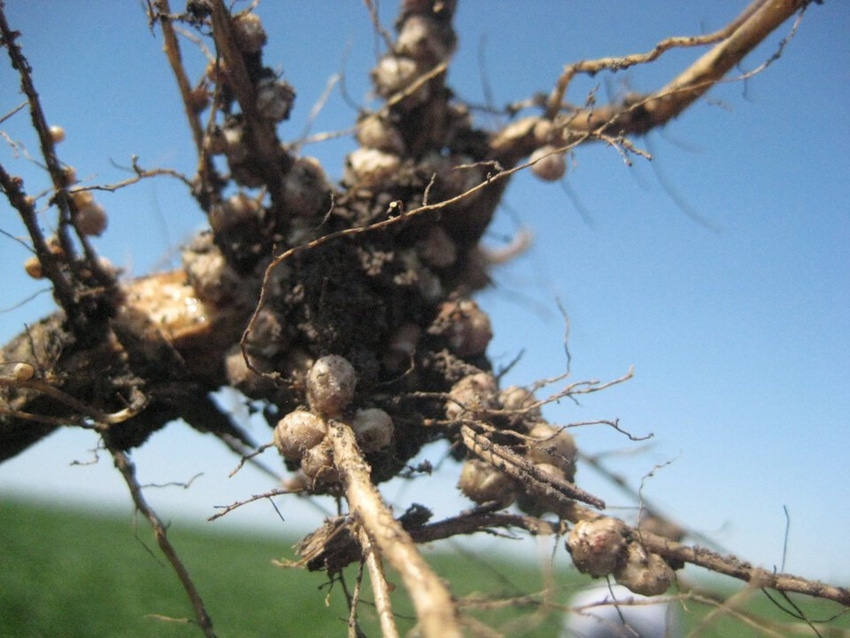May 22, 2023

Source: Corteva Agriscience
Soybean nodulation is the result of a symbiotic relationship with the bacterium B. japonicum, or rhizobia, and is initiated in the early vegetative stages.
To produce a bushel of grain, soybeans require as much as five pounds of nitrogen. Between 50% and 90% of that nitrogen is provided via the relationship with rhizobia. However, the growth, health and activity of rhizobia can be affected by many factors, such as saturated soils, unbalanced soil pH, extreme temperatures or even fertilizer applications. The presence of nitrogen in the soil can also impact the plant’s relationship with the bacteria as rhizobia may not be initially needed.
Staging soybean growth and counting nodules is the earliest and best way to gauge the nitrogen health of the plant. Nodules that are fixing nitrogen are pink or red inside. If the nodule is green, brown or white, it could indicate that little or no fixation is occurring.
Reduced nodulation can lead to nitrogen deficiency symptoms, such as yellow or stunted plants, if adequate residual nitrogen is not available. Yellowing of soybeans can also be caused by soybean cyst nematode (SCN), other nutrient deficiencies, herbicide applications or general environmental factors, leading to the importance of counting nodules.
To better manage nodulation, check first year soybean fields for nodulation around V2 to V3. Adequate nodulation is seven to 14 nodules per plant. If the number and quality of the nodules is not sufficient, supplemental nitrogen can be applied.
Follow best management practices if using urea-type products and apply at early flowering, when foliage is dry. Applications of up to 44 pounds of nitrogen per acre can be made, as higher rates are not usually profitable.
You May Also Like




